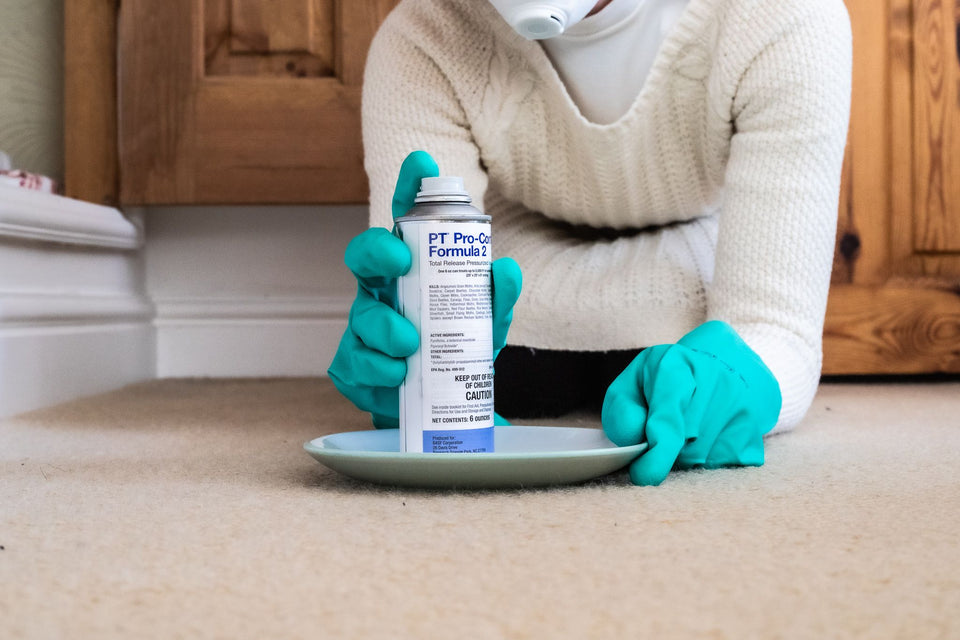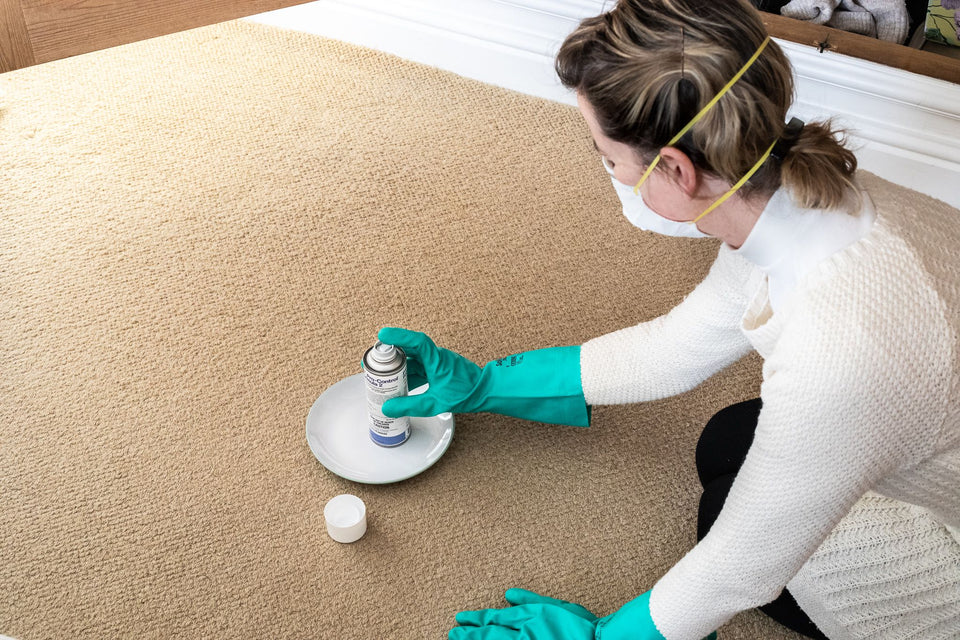Using Moth Foggers and Bomb Treatments at Home

Once a moth infestation has gripped your home, you’re going to want to try every single solution in the book to kill moths. Vacuuming, sweeping, spraying bug spray, freezing and steaming clothes. You’ll also find out that those microscopic little eggs that moths lay are hardier than you’d expect and those seemingly invincible moths keep coming back. That means you need a reliable way to rid your home of moths.
Moth foggers and moth bomb treatments may have popped up in your research, but the term “bomb” may be sounding a little intimidating!
So let’s dial it back a notch and figure out where moth foggers and bombs fit into a moth elimination plan for your home.
Can You Fumigate For Moths?
Yes. Fumigation with a moth fogger is a crucial part of dealing with house moth infestations. Moth fumigation has grown in popularity in recent years, because it is known to remove a variety of insects, not just moths. During fumigation, chemicals or gases that are toxic to the moths are released into the air. One of the benefits of fumigation for moths is that the chemicals can reach places adult moths could be hiding that other methods—traps and moth sprays—cannot.
The best source of fumigation is professional pest control.
What are Moth Foggers and Moth Bombs?

Fogging and fumigation are generally the same process, except buying moth foggers for your home is more convenient and less expensive than a professional service. There are various types of foggers, ranging from various styles and sizes, but most will come in a can or sealed plastic tub.
Also known as total-release foggers (TRFs), moth bombs work only in a single room for more intensive treatments. The moth bomb is set in the center of the space. Once activated, the insecticide is released and fills the room.
So, technically, moth foggers and moth bombs are both methods of fumigation and the names are often used interchangeably.
Don’t you love it when things have 2, 3 or even 4 different names?!
Some foggers release an aerosol spray by removing a tab from the top of the can, while others require you to light a wick to create fog like a traditional bug bomb or smoke bomb. In this regard, moth foggers and moth bombs ultimately serve the same purpose, but tend to be referred to differently based on the release mechanism; Aerosols commonly referred to as moth foggers, fumers referred to as smoke bombs or moth bombs.
According to the US Environmental Protection Agency (EPA), 1 oz of fogger per 1,000 cubic feet will work against a moth infestation. That means a 6-8 oz can of moth fogger is suitable for most average-sized homes.
How Do Moth Bombs Work?
As mentioned earlier, the selection of moth bombs and foggers is vast. The most common type is a small aerosol can. Place the moth fogger on a chair or stool in the middle of the room. You then activate the fog by removing a small tab that is on the top of the can. Droplets of pesticide are released into the air by an aerosol propellant before settling on surfaces throughout the space or home, depending on the size and coverage capacity of the fogger.
Do Bug Bombs Work on Moths?
For the most part, yes. The formula used to create most bug bombs and fumigators will work on moths of all kinds as well. The reason for this is the ingredients used within the bug fogger or bomb. Home fumigators use a mixture of silver iron, hydrogen peroxide, pyrethrins and pyrethroids (made from chrysanthemums). Some will contain dangerous chemicals to which you and your pets should never be exposed.
Do Moth Foggers Work on Moth Larvae?
Moth foggers generally work best on adult moths that are out in the open, not hidden. Moth larvae is best taken care of with more direct methods, such as sprays that kill eggs and larvae on contact.
This is true for all forms of bug bombs and foggers. The chemicals that settle must come into contact with the insect. Anything that is missed, such as eggs hidden within the folds of clothing or in corners of the room covered by furniture, may not be affected by the fogger.
Since it is the moth larvae, not the adult moths, that are destroying your clothing, carpets, or pantry items, you will want to utilize other methods to fully combat the infestation.
How to Use a Moth Fogger or Moth Bomb
- Gather and put on suitable protection such as a mask, gloves, etc.
- Remove Items You Don’t Want To Be Contaminated
- Confine The Space But Also Expose Confined Spaces Such As Cupboards
- Locate The Moth Fogger Centrally In The Room
- Activate The Moth Fogger Carefully
- Wait Whilst The Moth Fogger Works
- Ventilate The Room Thoroughly

Always read the manufactuers instructions, User Guides and other enclosed documentation before proceeding safely with your fumigation.

Why Use Moth Foggers and Moth Bombs?
When the non-chemical pest prevention methods you have used against invading moths have failed, the next step is to try a moth bomb or fogger. Although foggers and bombs do not always kill hidden larvae, they are key in tackling the population of adult moths in your home.

About MothPrevention
MothPrevention® speak to customers every day about their clothes moth issues - clothes moths are a species that are ever increasing and that can cause significant damage to clothes, carpets and other home textiles.
To date, we’ve helped over 250,000 customers deal with their moth problems. We have developed professional grade solutions including proprietary pheromones and trap design, not available from anybody else in the USA.





